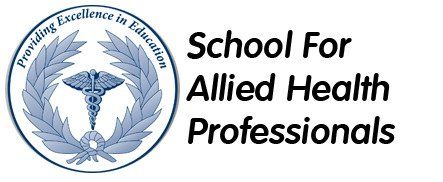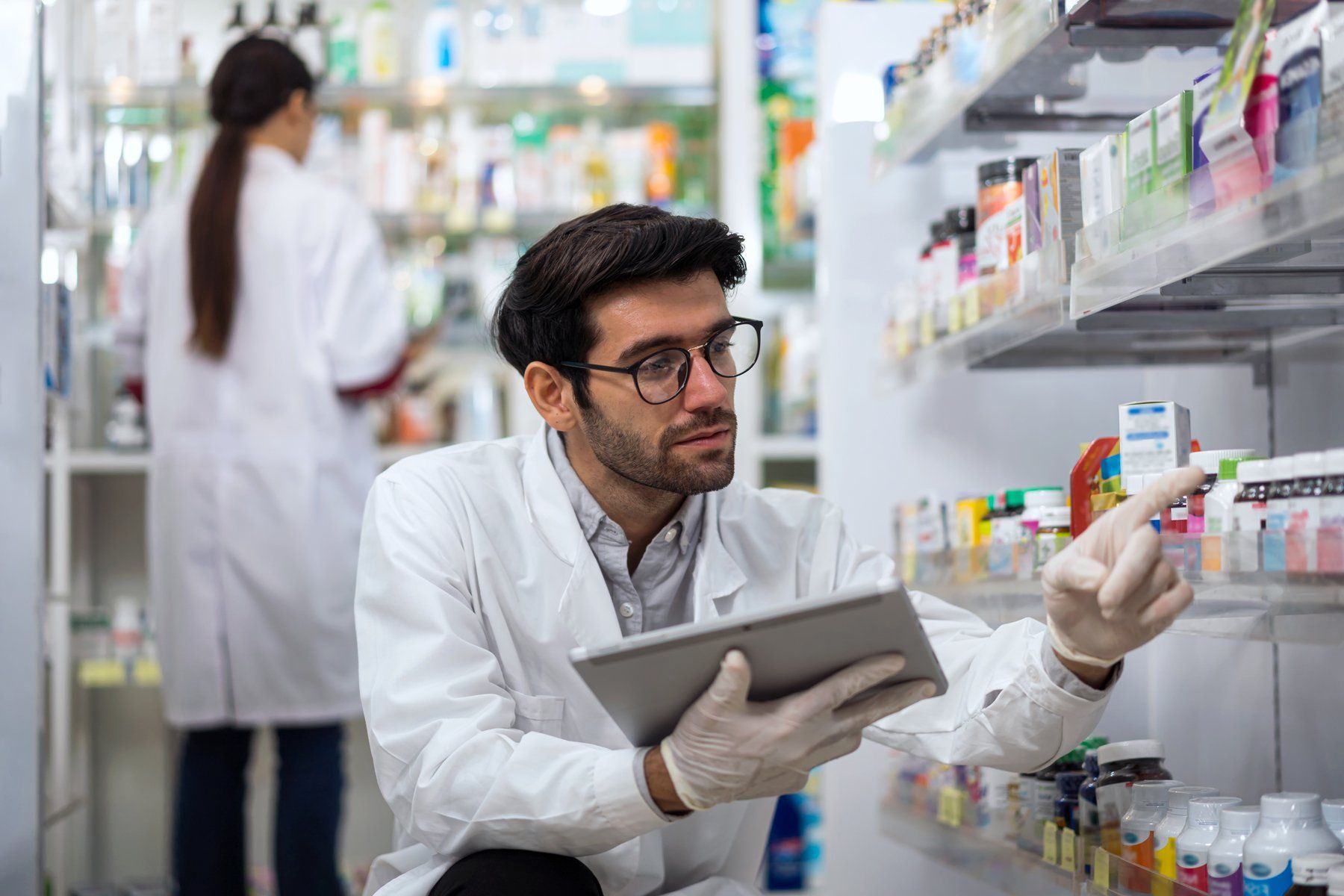MEDICAL ASSISTANT
• • •
ADMISSION REQUIREMENTS
Applicants may be admitted if they satisfy the following:
- They are a high school graduate or have certification of a high school equivalency (GED).
- They are at least 17 years of age (applicants under the age of 18 require the written permission from a parent or legal guardian in order to enroll).
- Must achieve a passing score of 12 on the Entrance Assessment Test. The test utilized by the School for Allied Health Professionals is the Wonderlic Scholastic Level Exam. Wonderlic has been in business since 1937 and is a nationally recognized exam used in schools to help accurately select students and predict training success.
PROGRAM OBJECTIVE
The Medical Assistant plays an important role as a member of the Health Care team in a physician’s office or clinic. Theory and practical application in the fundamentals of medical diagnostic laboratory techniques are taught. Students are introduced to the anatomy and physiology of the body systems. In addition, students will receive hands-on training with regard to venipuncture, injections, urinalysis, electrocardiography, measurement of vital signs, and preparation for physical and specialty exams. Students will learn basic medical office administrative duties. CPR class for certification is also available to all students.
This program will enable the students to assume a responsible entry-level position as a Medical Assistant. Laboratory skills and administrative procedures are taught for use in a physician’s office/clinic. This Certification Program also emphasizes communication skills. The knowledge gained in this program, combined with work experience will provide opportunities in managing an office. Graduates of this program may seek positions as: Clinical Medical Assistant, Administrative Medical Assistant, Medical Receptionist, and Laboratory Assistant.
CLASSROOM PROCEDURES
Each course offers hands-on training in the classroom and lab. The classroom is setup for the combination of class and lab (simulating a physician’s office). Computers are available for student use for simulated medical office training. During the classroom and lab training, students will learn the internal organs and cavities, the systems and structures of the body, principles of diagnostic imaging, the various uses of a microscope, electrocardiography, pathological urine specimens with emphasis on the correct way to collect record and report laboratory results, as well as taking patient vital signs and draping patients for specific examinations. Students will also learn the technique of venipuncture with vacutainer and syringes. Students will learn how to obtain accurate medical information from patients and document this information.
CAREER OPPORTUNITIES
Job prospects are expected to be very good for Medical Assistants. Employment is expected to grow much faster than average for the next eight to ten years because of increasing demands for qualified medical office personnel. About six out of ten Medical Assistants will work in physician offices. Medical Assistant positions are expected to be one of the fastest growing occupations from 2004 through the forseeable future.
Career prospects should be best for Medical Assistants with certification. About fourteen percent work in public and private hospitals, including inpatient and outpatient facilities while eleven percent work in offices of other health practitioners, such as chiropractors and podiatrists. Employment growth will be driven by the increase in the number of group practices, clinics and other health care facilities that need a high proportion of support personnel, particularly the flexible Medical Assistant who can handle both administrative and clinical duties. Medical Assistants work primarily in an outpatient setting, which is a rapidly growing sector of the health care industry.
CLASS SCHEDULES
Students will attend class Monday through Friday. Two class schedules are available to students each lasting four hours in duration. Session I will be held from 9:00 a.m. through 1:00 p.m. Session II will be held from 5:00 p.m. through 9:00 p.m.(time is subject to change) There will be a ten minute break every hour beginning at ten minutes until the hour.
EXTERNSHIP
The externship is a crucial part of the students overall training to become a Medical Assistant. The externship is undertaken following the successful completion of all classroom training and consists of 160 unpaid hours. Students will work Monday through Friday for eight (8) hours each day, for a total of (4) weeks. The maximum number of externs expected in the program at any one time is seventy five (75). The student will have to make up any hours missed. Students will work in either a medical office or hospital setting where they will participate in front office management, patient reception, patient care, appointment scheduling, charting procedures, and telephone techniques. Externs will also perform administrative tasks such as mail handling, bookkeeping, and record filing. Externs will also perform routing diagnostic laboratory tests including urinalysis, blood counts sedimentation rates, blood chemistries, and agglutination tests. Other externship responsibilities may include performing routine laboratory tests. Evaluations of externs with verbal critique by the work site supervisor will occur weekly. The externship coordinator will visit the externship sites at least once per week. Externs are required to attend a weekly meeting on the school’s campus every Friday to discuss their observations/ experiences. Externs are required to maintain a daily journal to be discussed during their weekly meetings. Students are required to write a final report that will be submitted on the day of their final externship meeting.
MEDICAL ASSISTANT CAREER OPPORTUNITIES
Graduates are able to secure employment in a Physician’s Office, Hospital, Nursing Homes, Specialty Clinics and Mobile Clinics.
PROFESSIONAL DUTIES
- Assist Physician with Exams
- Assist Physician with Minor Surgery
- Administer Medication
- Perform EKG’s
- Phlebotomy
- Diagnostic Coding
- Minor Laboratory Procedures
- Vital Signs
- Interviewing Patients
- Insurance Processing
- Front Office Assistant
- Billing
- Procedure Coding
- Diagnostic Coding
- Instrument Sterilization
- Charting
OCCUPATIONAL OUTCOMES
- Medical Assistant
- Back Office Assistant
- Back Office Lab
- Front Office Assistant
- Phlebotomist
- EKG Tech
POTENTIAL EARNINGS
Average starting salaries could vary in range depending on previous work experience, continuing education and location. Please refer to www.salary.com for the most up to date information regarding the salary range for Medical Assistants.
COURSE DESCRIPTIONS
MA101 – Introduction to Medical Assistant
Clock Hours: 48 Lecture/ 32 Lab/ 0 Extern. Semester Credit Hours: 4.0. Upon completion of this module students will learn the concepts of medicine and bloodborne pathogens. In this course students will learn the history of medicine, allied health professions, and general responsibilities of a medical assistant. Students will also learn how to assist with patient examinations, OSHA regulations with an emphasis on asepsis, universal and standard precautions, and bloodborne pathogens. Students will gain practical knowledge of the anatomical structure and key elements of the Nervous, Integumentary, and Special Senses systems. Prerequisites: None
MA102 – Clinical Laboratory I
Clock Hours: 48 Lecture / 32 Lab / 0 Extern Semester Credit Hours: 4.0 Upon completion of this module students will gain a practical knowledge of the clinical laboratory and their organization procedures. Students will learn procedures to immunology and chemistry testing. Students will have the knowledge of assisting the physician in minor office surgical procedures. Students will gain practical knowledge of the anatomical structure and key elements of the Immune and Endocrine System. Students will also learn electronic medical records, medical correspondence, and management software. Prerequisites: None
MA103 – Pharmacology
Clock Hours: 48 Lecture / 32 Lab / 0 Extern Semester Credit Hours: 4.0 Upon completion of this module students will gain the practical knowledge of human disease process and rational pharmacotherapeutics relating to drugs utilized for the human body. Students will learn the drug indications, contraindication, and mechanism of action, side effects, dosages, and methods of administering medications. The students will learn to react and assist in medical emergencies. Students will gain practical knowledge of the anatomical structure and key elements of the Muscular and Skeletal systems. Students will also learn medical law and ethics relating to federal and state guidelines. Prerequisites: None
MA104 – Clinical Laboratory II
Clock Hours: 48 Lecture / 32 Lab / 0 Extern Semester Credit Hours: 4.0 Upon completion of this module students will gain the practical knowledge of medical diagnostic and laboratory techniques. Students will learn procedures to hematology testing, including venipunctures, hemoglobin, hematocrit, and blood chemistry testing. Students will also learn diagnostic testing involving electrocardiogram and pulmonary functions. Students will gain the knowledge and practice of quality control and quality assurance in the laboratory. The students will learn to react and assist in medical emergencies. Students will gain practical knowledge of the anatomical structure and key elements of the Cardiovascular and Respiratory systems. Prerequisites: None
MA105 – Clinical Laboratory III
Clock Hours: 48 Lecture / 32 Lab / 0 Extern Semester Credit Hours: 4.0 Upon completion of this module students will be able to perform basic office procedures typical in a doctor’s office. Students will learn a comprehensive study of the chemical and microscopic aspect of urinalysis. Students will learn to provide education to patients related to diet and nutrition. Students will be able to perform basic office procedures typical in a doctor’s office including scheduling appointments, working with patients, telephone etiquette, maintaining patient medical records. Students will gain practical knowledge of the anatomical structure and key elements of the Digestive and Urinary systems. Prerequisites: None
MA106 – Management & Finances
Clock Hours: 48 Lecture / 32 Lab / 0 Extern Semester Credit Hours: 4.0 Upon completion of this module students will gain the practical knowledge of management and financial procedures. Students will learn filing insurance claims, medical billing and coding, accounts payable and accounts receivable. Students will learn the basics to being a medical office manager serving as a liaison to physicians, employees, and patients. Students will gain practical knowledge of the anatomical structure and key elements of the Body Structure, Function and Reproductive systems. Prerequisites: None
MA199 – Externship
Clock Hours: 0 Lecture / 0 Lab / 160 Extern Semester Credit Hours: 3.5 The externship is undertaken following the successful completion of all classroom training and consists of 160 hours (eight hours per day, five days per week). The students will spend 160 unpaid hours under the direct supervision of a preceptor (office employee) in a medical office or other healthcare setting. The student will practice all skills taught during classroom and lab courses while at the extern-site. Administrative and clinical patient management procedures are a vital part of their externship. Prerequisites: MA101, MA102, MA103, MA104, MA105, MA106
SCHOOL FOR ALLIED HEALTH PROFESSIONALS
UNDERGRADUATE CERTIFICATE IN MEDICAL ASSISTANT
PROGRAM LENGTH: 7 MONTHS
Other Costs Visit website for more program cost information
*The amounts shown above include costs for the entire program, assuming normal time to completion.
Note that this information is subject to change.
Graduates who got jobs
88% of program graduates got jobs according to the state job placement rate
Program graduates are employed in the following fields:
Licensure Requirements
This program meets licensure requirements in
Texas*
*State requires students to sit for licensure exam
Additional Information Date Created 3/22/2017
These disclosures are required by the U.S. Department of Education
We will get back to you as soon as possible.
Please try again later.
1615 W. Abrams St. Suite. 110 Arlington, TX 76013
(817) 846-7590 | (682) 238-3508
Monday-Friday 9-4
Weekends By appointment only
1615 W. Abrams St. Suite. 110 Arlington, TX 76013
(817) 846-7590
| (682) 238-3508
Monday-Friday 9-4
Weekends By appointment only














